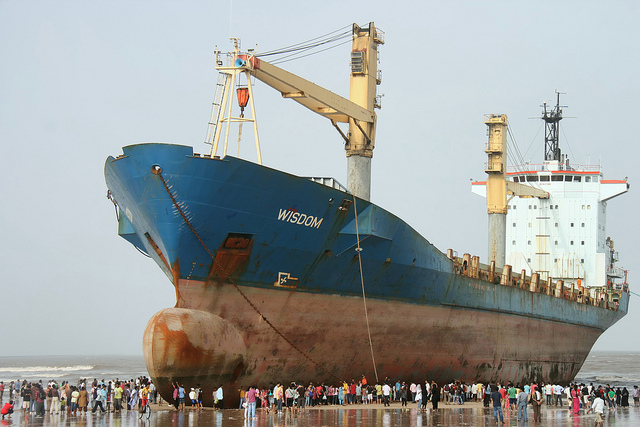Social enterprise Good for Us is crowdfunding for their upcoming event – Conscious Consumption Design Jam, to gather social and digital experts to brainstorm and prototype design ideas for sustainable consumer behaviour. Eleven days to go, please pledge generously! More details below! Continue reading “Now Crowdfunding: Conscious Consumption Design Jam”
Tag: sustainable
Back GreenChamp bikes on Kickstarter!
If you are for sustainable design and sustainable living, and wish to support a startup with an eco product, consider backing a GreenChamp bamboo bicycle for kids on Kickstarter. Created for kids between the ages of 18+months and 5 years, GreenChamp Bikes is a balance bike which equips kids with the skills to ride a bicycle in coming years, and is a sustainable alternative to ones made from plywood, aluminium and plastic.
View the project on Kickstarter here, more details below!
The EcoChic Design Award is back!
Back for another year, the EcoChic Design Award is a sustainable fashion design competition inspiring emerging fashion designers to create mainstream clothing with minimal textile waste. Designers are educated with the theory and techniques to enable them to create desirable sustainable clothing via zero-waste, up-cycling and reconstruction sustainable design techniques.
The 2014/15 competition cycle is open to fashion designers with less than three years’ professional experience and fashion design students living in Hong Kong, Mainland China, Taiwan, Singapore, Malaysia, UK, France, Germany, Sweden and Denmark. One finalist from each of the ten regions will be selected to present their sustainable collection at Hong Kong Fashion Week in mid January 2015 to compete for career-changing prizes. The deadline for application is 15 August 2014.
For more information, please check out the Application Guidelines and their website. Also available for download is this Application Form.
TODAY: HDB’s new tool will let it simulate urban scenarios
TODAY has reported that an MOU was signed between HDB and Veolia to test-bed a simulation device which will aid in sustainable urban planning.
HDB’s new tool will let it simulate urban scenarios
SINGAPORE – The Housing and Development Board will soon be able to make better and more informed decisions on sustainable urban planning initiatives – such as which public housing blocks should have green roofs or solar panels – with the introduction of a new modelling tool.
A Memorandum of Understanding to test-bed this modelling tool was signed between the HDB, Electricite de France and VEOLIA Environement Recherche et Innovation yesterday at the World Cities Summit.
The complex Systems Model simulates the built environment of a city and its impact on resource use, environment, people and costs, using complex systems modelling technique.
Said HDB Chief Executive Officer Cheong Koon Hean: “This new tool will help us in formulating holistic and sustainable urban solutions that will ultimately benefit our residents.”
The simulation tool is currently being piloted in the Greenprint neighbourhood in Jurong East.
It will simulate and project data for different scenarios, such as shade patterns and waste production, so that sustainable solutions can be implemented. For example, with data on shade patterns, the HDB will be able to determine which blocks should have solar panels to harness the maximum amount of solar energy and which blocks should have green roofs to minimise stress on drainage systems and reduce temperatures.
The system will also be able to access social behaviour, such as which blocks produce the most waste, so it can be taken into consideration when planning waste collection points.
As the tool can project different complex scenarios, the HDB hopes to eliminate the risk of physical trial and error when implementing urban solutions by first testing and simulating the solutions on computers.
Partially funded by the Economic Development Board, the system will be developed in a year, with the HDB hoping to implement actual infrastructure into Jurong East neighbourhood by 2014.
Separately, the National Environment Agency and IBM researchers yesterday announced a three-year collaboration to develop advanced predictive capabilities to simulate, forecast, manage and report on key environmental concerns in Singapore.
Image from re-Design
‘We want a greater sense of home’: Singaporeans
Over the weekend, The Straits Times published this story on what Singaporeans wish for a more liveable city.
‘We want a greater sense of home’: Singaporeans
AHEAD of the World Cities Summit that Singapore will host next weekend, The Straits Times asked Singaporeans what they would like to see in their city.
Most of the 50 surveyed long for a greater sense of home and community.
They highlight conservation of green and heritage spaces, a slower pace of life, lower cost of living, better care for the poor and disabled, and avenues for citizens to be engaged in the life of their city.
Many also hope for a more liveable city. For six of those interviewed, that means more bike paths – to encourage a healthy lifestyle and less dependency on cars.
Other items on the wish list include more green oases, farmers’ markets, urban farms, community plazas, animal-friendly places, and more variation in building styles.
New York City was cited often as a model for Singapore to look to for inspiration. That is apt, as New York is the recipient of this year’s Lee Kuan Yew World Cities Prize, which will be awarded at the summit.
Green business owner Eugene Tay, 34, wants more exchanges like the one over the Rail Corridor, where citizens are given the room to act, and where the people themselves generate ground-up initiatives for shaping their environment.
Future Cities Laboratory researcher Jason Lim, 32, raises as examples a competition in New York calling for ideas to revitalise a polluted canal, and the municipal government’s partnership with community groups to turn a disused railway track into what has become a famous park called The High Line.
Green activist Olivia Choong, 33, sees these as ideas not just for building a city, but for building a community. ‘The more citified we become, the more we disconnect from each other. We need these to make the city more liveable and the community stronger.’
Older Singaporeans like history buff Jerome Lim, 47, understand but bemoan the city’s rapid pace of change, and long for better preservation of the city’s history.
Pointing to the transformation of the Marina Bay area in recent years, he says: ‘I remember the walks I used to take there as a boy with my parents. That is all gone, replaced now by this futuristic- looking city. It has a certain appeal, but a lot of people are struggling to accept that.’
Cultural studies academic Liew Kai Khiun, 39, says: ‘Maybe the authorities should move from… ‘removing, relocating and replacing’ places to… ‘repairing, reinforcing and rooting’ communities.’
Others call for a lower cost of living and a slower pace of life, through decreased taxes, more public holidays and policies supporting work-life balance.
But for Ms Sandra Ho, 25, a teacher in a private school, and recent graduate Lin Hongxuan, 25, their key concern is for others. They would like to see better access to public transport for the disabled.
Singapore Institute of Architects president Theodore Chan, 52, thinks it is natural for Singaporeans to focus on the intangibles over the city’s built aspects.
‘We have done the hardware very well. We’re no longer talking about bread and butter pressures. Now we take a step back and talk about refinement.’
From July 1, Singapore welcomes city planners and mayors from around the world to the third World Cities Summit.
They will trade best practices and the latest innovations in city planning and management.
Channel NewsAsia: What’s the future of shipping industry?
Secretary-general of the International Maritime Organisation (IMO), Mr Koji Sekimizu is in town for Singapore Maritime Week, and spoke to Channel NewsAsia on making the shipping industry a sustainable one.
What’s the future of shipping industry?
SINGAPORE: “Sustainable development” is the buzzword for the future of the shipping industry, according to Mr Koji Sekimizu, secretary-general of the International Maritime Organisation (IMO).
Mr Sekimizu, who is in town for the Singapore Maritime Week, spoke to Channel NewsAsia on the challenges and opportunities for the global shipping industry.
Sustainable development is development that meets the needs of the present without compromising the ability of future generations to meet their own needs.
The definition is according to the World Commission on Environment and Development’s (the Brundtland Commission) report, “Our Common Future”.
Some 90 per cent of global trade is carried by sea.
World seaborne trade figures bounced back from the financial crisis in 2009 and grew almost seven per cent to 8.4 billion tons in 2010.
This mode of transport remains critical to the continued growth of the world economy.
But the shipping industry needs to embrace new technology to ensure its sustainability for the future.
Mr Sekimizu said: “There are a number of potential risks involved that may hinder the development.
“One of them is regional action to be taken. The shipping industry is really an international industry that needs to be supported by global standard.
“That’s why international shipping industry is always promoting the value of global standard.
“When it comes to sustainable development, again, the shipping industry has to be supported by new ways of idea, innovative way of handling, new technology and innovation. But at the same time, education and training and security are also important factors.
“And also, maritime traffic management, maritime infrastructure — those are the pillars to support the future of sustainable international shipping.”
Mr Sekimizu said these sustainability issues will be discussed at the UN Conference on Sustainable Development (UNCSD) this June.
Called “Rio+20”, the conference aims to develop the common concept of “sustainable development” for the shipping industry.
Despite the challenges confronting the shipping industry, such as rising energy costs and shipyard overcapacity, developing countries continue to account for the largest share of global seaborne trade, reflecting their resilience to economic setbacks.
Experts said they will play an increasingly leading role in driving global trade.
IMO said piracy remains a big threat to the industry.
Experts added it may also derail the seaborne trade opportunities in the industry.
However, it is currently working towards establishing a regional mechanism of cooperation for the African countries to curb piracy within that region.
Image taken from amitbhawnani







